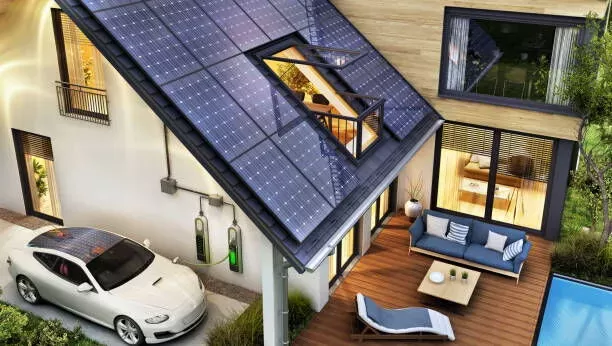Notifications

7 minutes, 41 seconds
-43 Views 0 Comments 0 Likes 0 Reviews

Introduction: A Sustainable Power Partnership
As a professional China EV charger manufacturer, Topper Company provides dependable electric vehicle charging equipment and comprehensive charging solutions.
As the world races toward a greener future, two technologies stand out as game-changers: electric vehicles (EVs) and solar energy. Individually, each offers substantial environmental and economic benefits. Together, through solar EV charging, they form a powerful synergy that addresses some of our most urgent energy and climate challenges.
Solar EV charging harnesses solar power to charge electric vehicles, blending zero-emission mobility with clean, renewable energy generation. With rising EV adoption and expanding solar installations, this approach is quickly shifting from a niche idea to a mainstream solution embraced by homeowners, businesses, and municipalities seeking smarter, cleaner energy alternatives.
Solar EV charging captures sunlight using photovoltaic (PV) panels and converts it into electricity to power EVs. This electricity can charge the vehicle directly during daylight or be stored in batteries for use when the sun isn’t shining, such as at night or on cloudy days.
Essentially, solar EV charging creates a closed energy loop—you generate your own clean power and use it where it’s needed most: your car. Unlike grid electricity, which often relies on fossil fuels, solar energy is abundant, renewable, and emission-free.
Common setups include:
Grid-tied systems: Excess solar power feeds into the grid, and the grid supplies power when solar generation is low.
Off-grid systems with batteries: Solar energy is stored onsite to charge the EV anytime, independent of the grid.
Hybrid systems: Combine grid-tied and battery storage for flexibility and reliability.
Installing a solar EV charger at home is one of the most effective ways to maximize renewable energy use and reduce carbon footprints.
Key considerations:
Solar system size: Residential systems typically range from 5 kW to 15 kW, affecting how much power you can generate for home use and EV charging.
EV charger type: Level 2 chargers (3.3 kW to 22 kW) are ideal for home use, balancing speed and cost.
Driving and battery usage: Charging needs depend on how far you drive and your EV battery’s state of charge.
Solar availability: Solar output peaks midday; smart chargers can align charging times to maximize solar use.
Steps to install:
Site evaluation: A professional assesses your roof’s orientation, shading, and capacity needs.
Choose charger and inverter: Opt for solar-compatible Level 2 chargers and hybrid inverters if using batteries.
Mount panels: Panels are installed at optimal angles to capture sunlight efficiently.
Wiring and integration: Licensed electricians connect panels, inverters, batteries, and chargers to your home’s electrical system.
Charger installation: The EV charger is installed in your garage or driveway, integrated with your solar system.
Smart chargers optimize when your EV charges by syncing with solar production and even weather forecasts. When solar power is abundant, charging ramps up automatically; during cloudy periods or at night, the charger can switch to grid power or pause charging, maximizing efficiency and cost savings.
Environmental advantages:
Significant carbon footprint reduction by charging EVs with clean solar power.
Improved air quality by cutting fossil fuel electricity use.
Financial benefits:
Lower electricity bills: Solar power reduces reliance on grid electricity costing about $0.16/kWh on average in the U.S.
Avoid expensive public charging fees, which can be $0.30/kWh or higher.
Incentives and tax credits can cover 30% or more of installation costs.
Example:
A typical driver traveling 1,500 miles/month (~429 kWh) spends about $69 on grid electricity. Solar charging drops that cost to roughly $21, saving 70% monthly and over $10,000 across the system’s lifetime.
Time-of-Use (TOU) rates:
Solar charging helps avoid expensive peak-hour electricity prices by prioritizing midday charging when solar output is highest, easing grid demand.
Adding a battery system like Tesla Powerwall stores excess solar energy, enabling:
24/7 solar charging, even after dark.
Energy independence during grid outages.
Optimized charging aligned with TOU electricity pricing.
High upfront costs: Installation can run from $15,000 to $25,000, though incentives improve affordability.
Roof limitations: Not all homes have ideal roof space or sunlight exposure.
Permitting and net metering: Local regulations and policies can add complexity.
Despite these, the long-term savings and environmental impact make solar EV charging a compelling investment.
Solar-powered EV chargers in businesses, parking lots, and highways often use solar canopies—carport-style panels that generate power and provide shade.
Benefits include:
Enhancing brand sustainability image.
Cutting energy costs and demand charges.
Attracting EV-driving customers with free or affordable charging.
Innovations shaping the future include:
Vehicle-to-grid (V2G) tech: EVs can supply energy back to the grid.
Portable solar chargers: Compact panels for emergency charging on the go.
AI-powered energy management: Systems that learn habits and weather to optimize charging.
As solar tech improves and EV adoption grows, solar EV charging will be central to decarbonizing transportation.
Solar EV charging is more than a trend—it’s a transformative shift in energy and mobility. By merging electric vehicles with the sun’s renewable power, we reduce fossil fuel dependence, save money, and protect the environment.
For homeowners, businesses, and governments, investing in solar EV charging is not only smart but essential. With advancing infrastructure and falling costs, the road ahead shines bright—powered by nothing less than sunlight itself.Know more about Google SEO Directory
China EV Chargers EV Charger Manufacturer EV Charging Solutions

